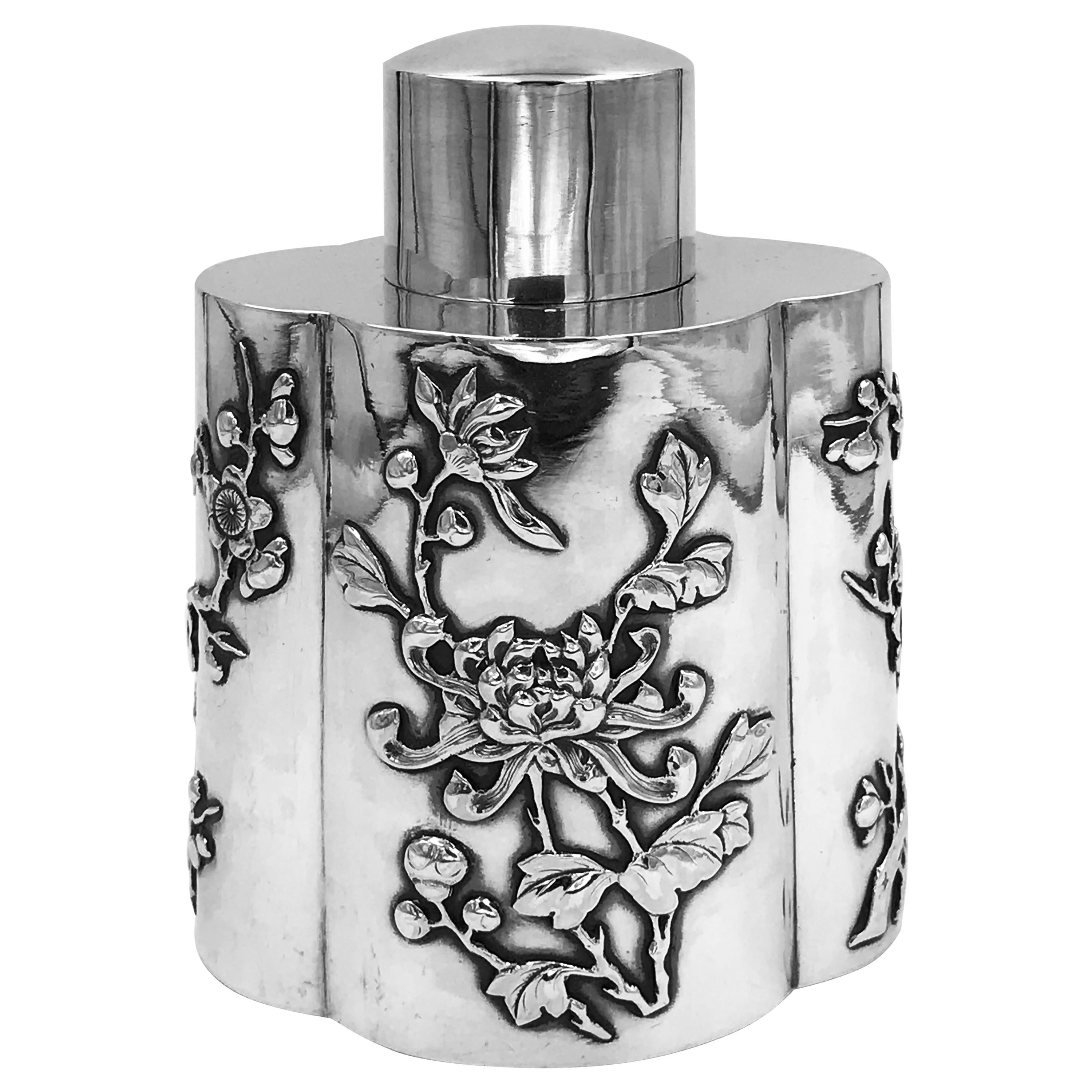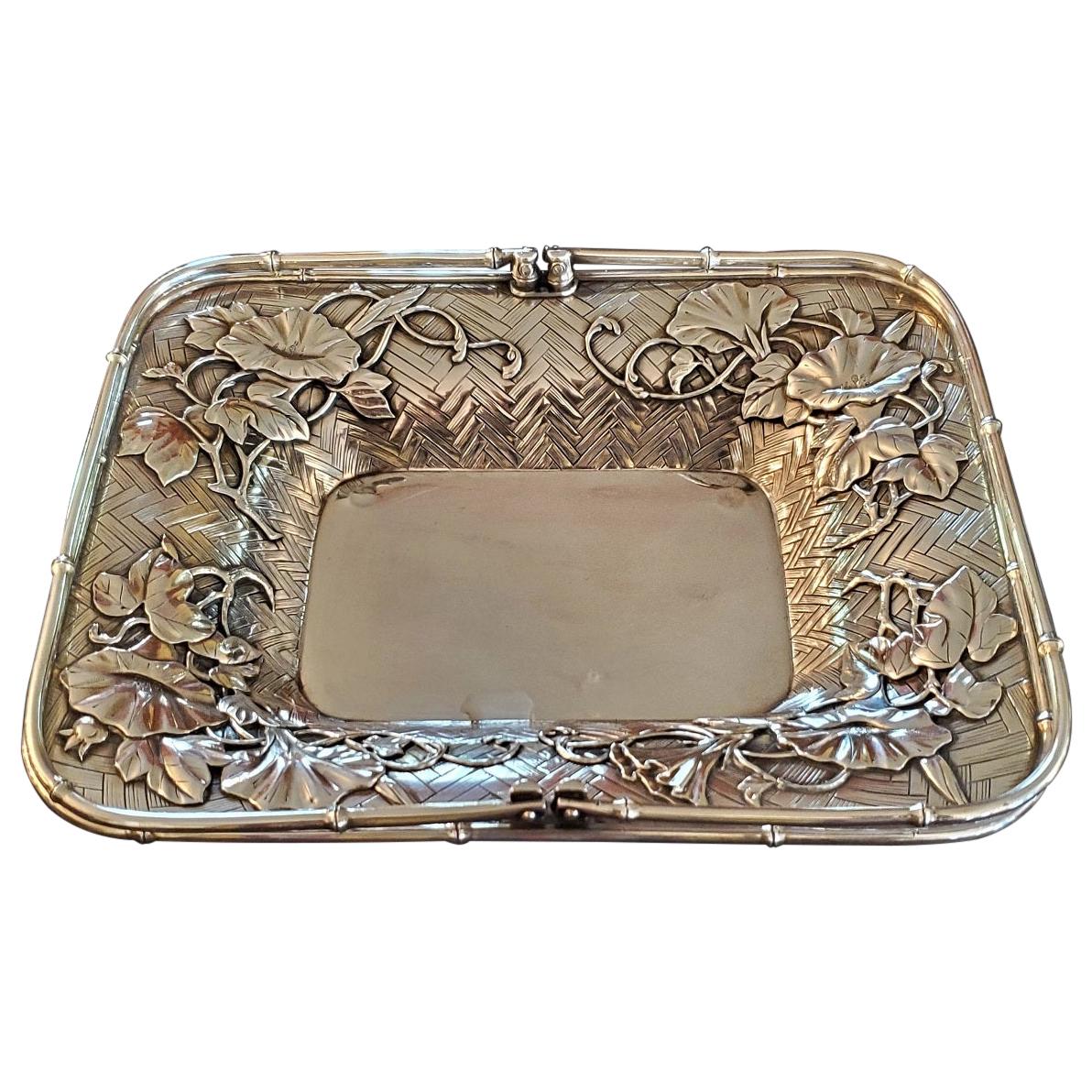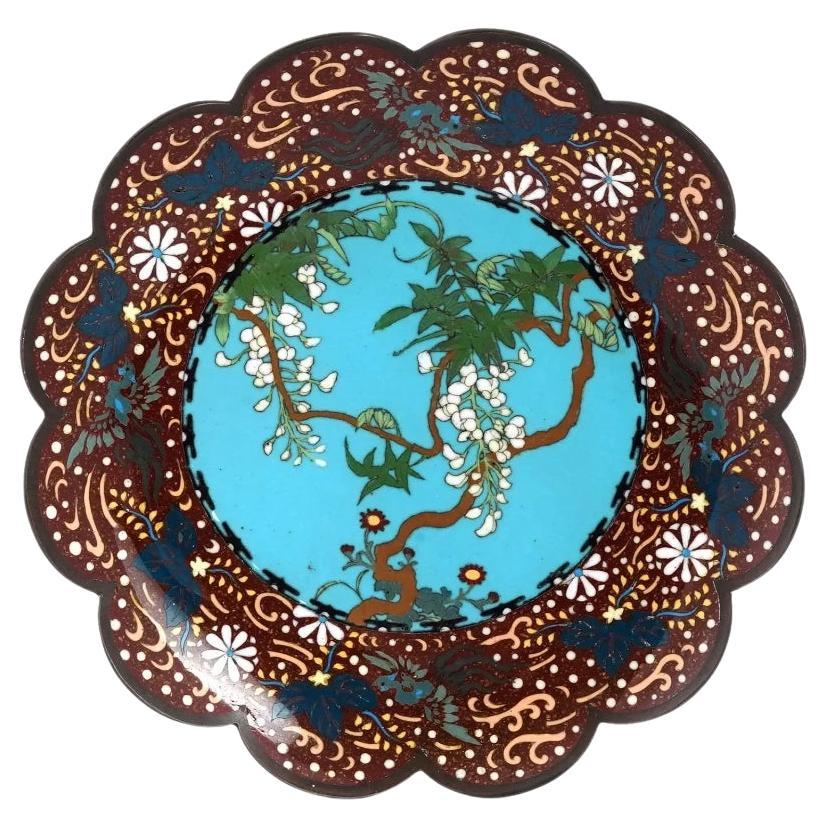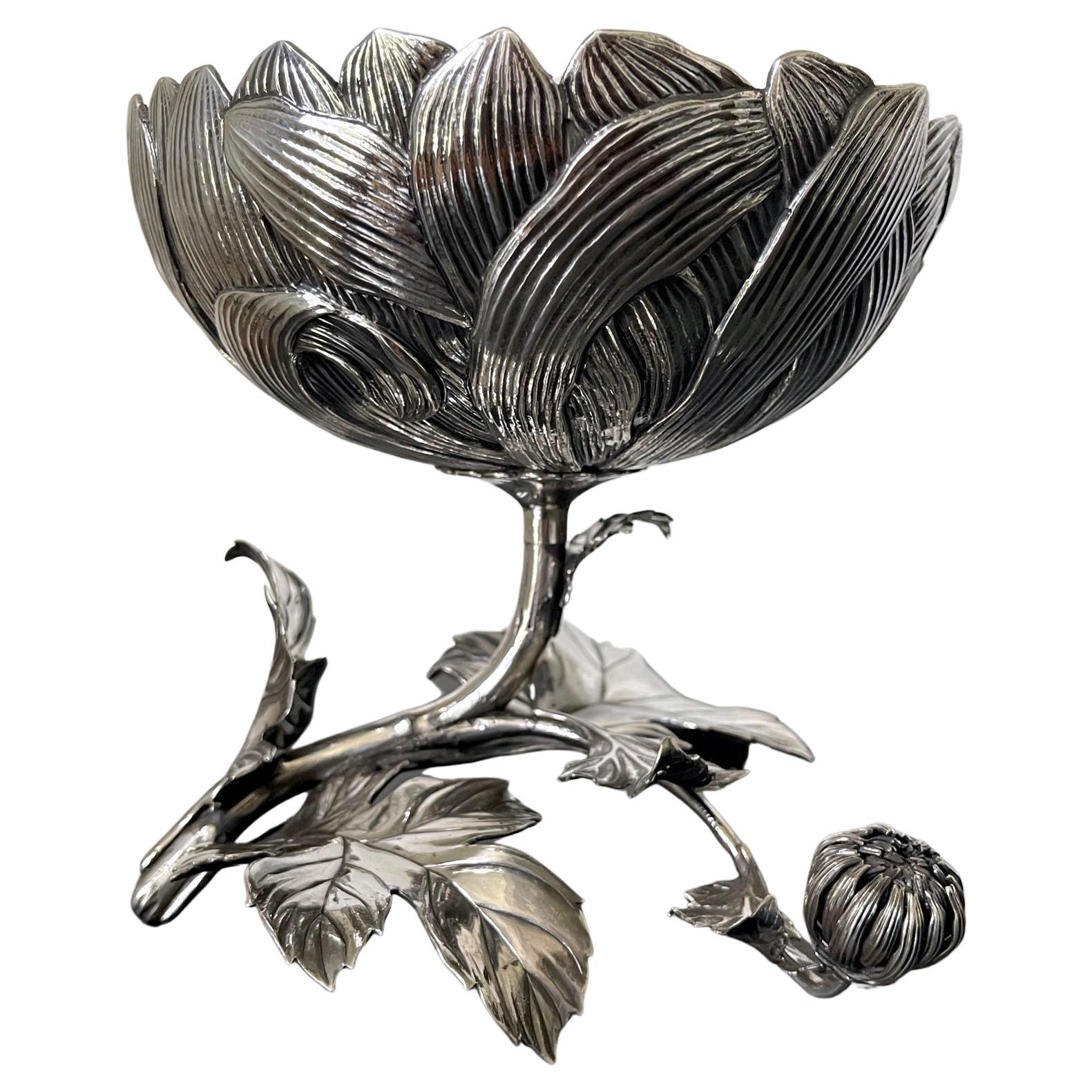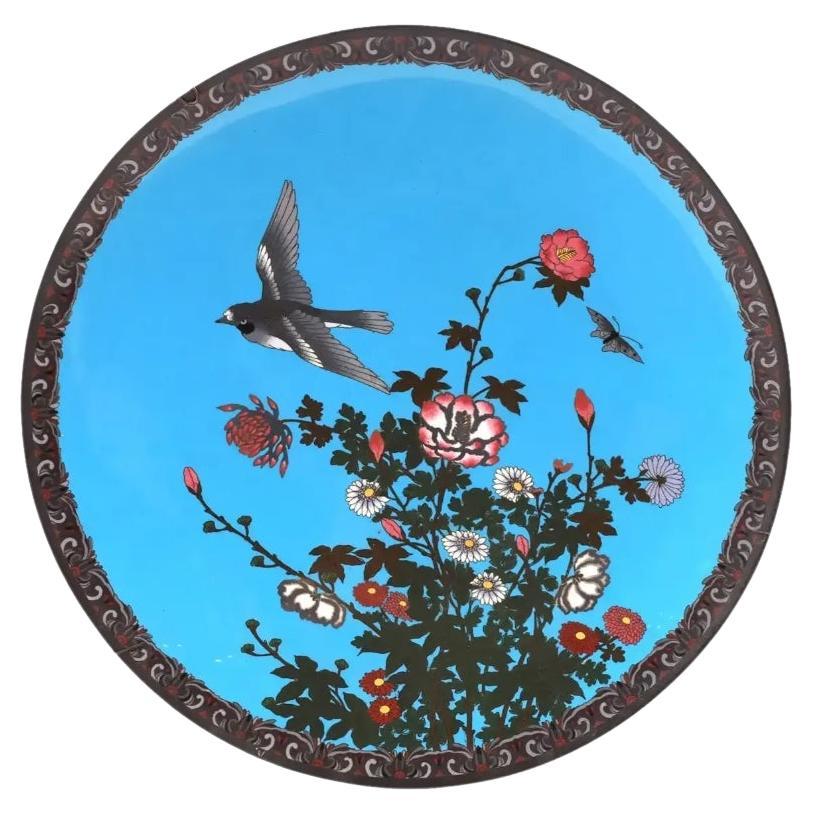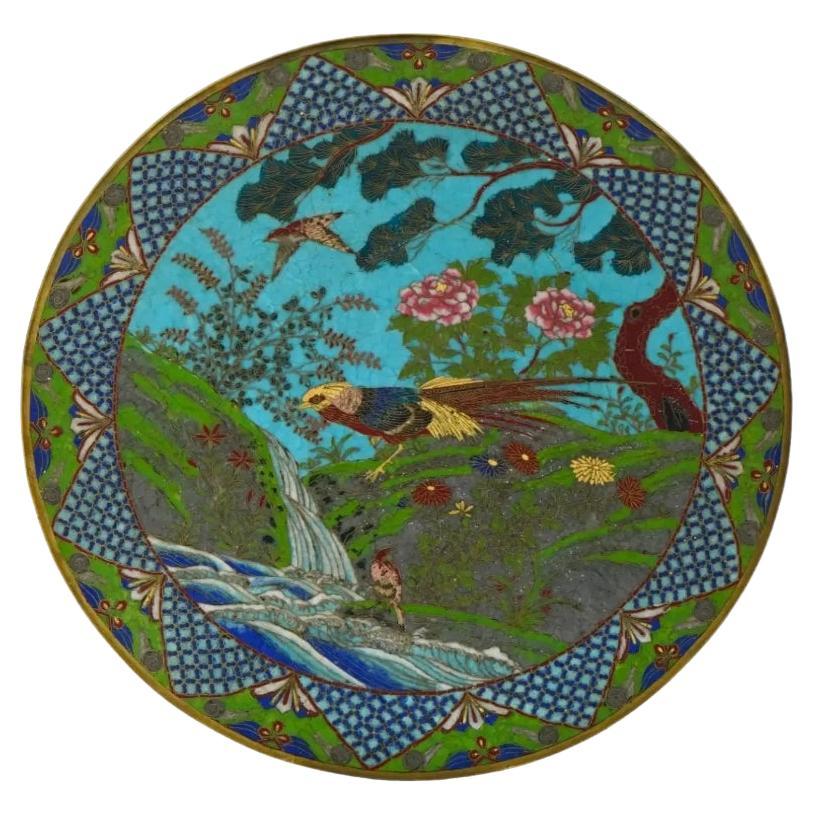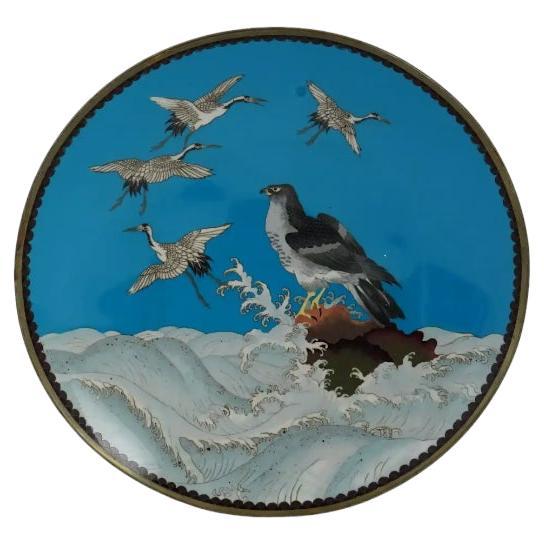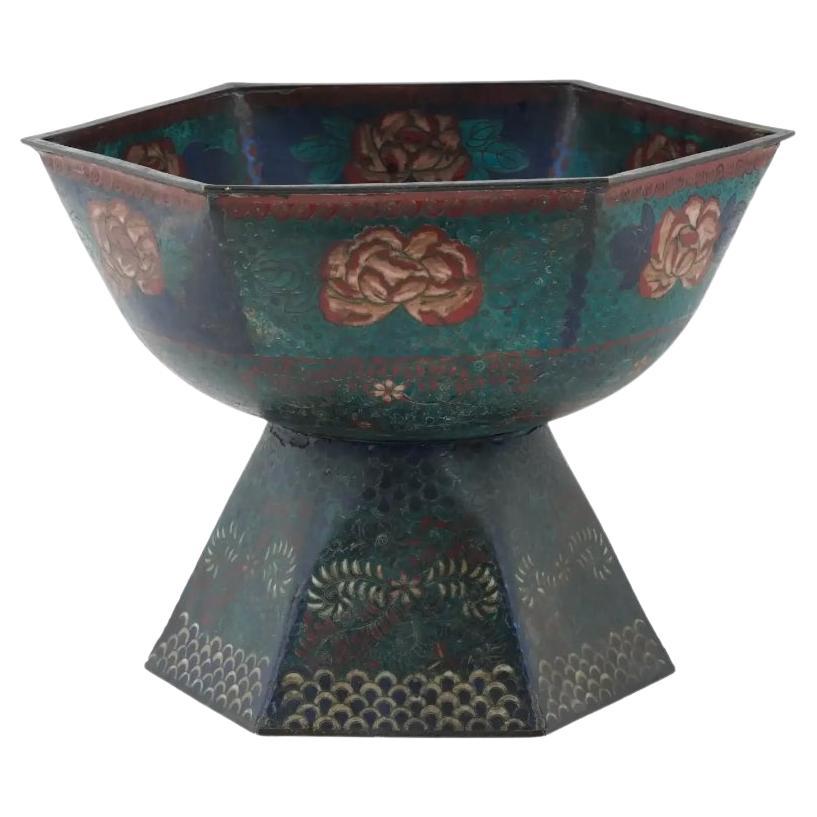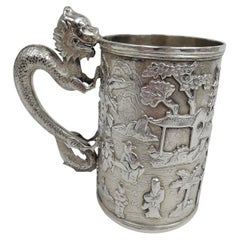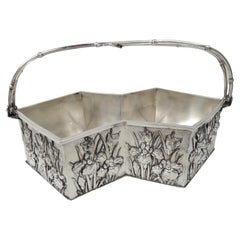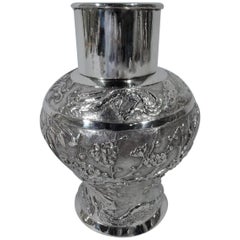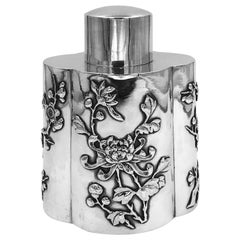
Antique Japanese Meiji Silver and Enamel Wisteria Tea Caddy
View Similar Items
Want more images or videos?
Request additional images or videos from the seller
1 of 7
Antique Japanese Meiji Silver and Enamel Wisteria Tea Caddy
About the Item
- Dimensions:Height: 4.25 in (10.8 cm)Diameter: 2.5 in (6.35 cm)
- Style:Meiji (Of the Period)
- Materials and Techniques:
- Place of Origin:
- Period:
- Date of Manufacture:circa 1900
- Condition:
- Seller Location:New York, NY
- Reference Number:Seller: BN4421stDibs: LU898010174501
About the Seller
4.9
Recognized Seller
These prestigious sellers are industry leaders and represent the highest echelon for item quality and design.
Platinum Seller
These expertly vetted sellers are 1stDibs' most experienced sellers and are rated highest by our customers.
Established in 1975
1stDibs seller since 2010
745 sales on 1stDibs
Typical response time: 4 hours
More From This SellerView All
- Antique Chinese Export Silver Mug with Dragon HandleLocated in New York, NYChinese export silver mug, ca 1860. Straight and upward tapering sides with applied pictorial frieze on engraved and stippled ground: Scenes of social life with contemplative sages and chaste maidens amongst palm trees and pagodas. Pastoral exoticism enlivened with scaly, slithering dragon handle...Category
Antique Mid-19th Century Chinese Chinese Export Sterling Silver
MaterialsSilver
- Antique Japanese Meiji Art Nouveau Silver BasketLocated in New York, NYJapanese Meiji Art Nouveau silver basket, ca 1890. Faceted zigzag bowl with convex ends and concave sides, and double bamboo-style swing handle. Sid...Category
Antique Late 19th Century Japanese Art Nouveau Sterling Silver
MaterialsSilver
- Antique Chinese Silver Bamboo Tea Caddy by Hung ChongBy Hung Chong & Co.Located in New York, NYChinese export silver tea caddy, circa 1900. Baluster with drum-form neck and cover. Chased and repousse bamboo and blossoming prunus branches on stippled ground. Plain band at shoulder. Also plain are foot rim, neck, and cover sides. Cover top has circular frame (vacant). Fully marked with Chinese characters and letters HC for Hung Chong...Category
Antique Late 19th Century Chinese Chinese Export Sterling Silver
MaterialsSilver
- Antique Japanese Meiji-Era Silver Box with Iris FlowersLocated in New York, NYJapanese silver box, ca 1890. Rectangular with straight sides and hinged cover. On cover top and box sides are chased and engraved iris flowers and tendril...Category
Antique Late 19th Century Japanese Art Nouveau Sterling Silver
MaterialsSilver
- Tiffany Exotic Silver and Copper Mixed Metal Ginger Jar Tea CaddyBy Tiffany & Co.Located in New York, NYExotic mixed metal tea caddy. Made by Tiffany & Co. in New York, circa 1910. Sterling silver ginger-jar with squat and tapering sides, short neck, an...Category
Early 20th Century American Aesthetic Movement Sterling Silver
MaterialsSilver, Copper
- Antique Chinese Silver Gilt, Agate & Enamel CenserLocated in New York, NYChinese silver censer, circa 1910. Drum-form agate body set in silver gilt mounts with scrollwork and lunettes. Leaf-capped side bracket handles. Upward tapering support and stepped ...Category
Early 20th Century Chinese Qing Metalwork
MaterialsAgate, Silver, Enamel
You May Also Like
- Chinese Export Silver Tea CaddyLocated in London, GBA Chinese Export Silver Tea Caddy of shaped oval form, with applied prunus and chrysanthemum decoration and a plain, pull-off lid. The retailer is sho...Category
Antique Late 19th Century Chinese Chinese Export Metalwork
MaterialsSilver
- Japanese Meiji Period Sterling Silver 2 Handled Basket by Katsu MiyamotoBy Miyamoto Shoko 1Located in Dallas, TXPRESENTING a GORGEOUS, VERY HIGH QUALITY and EXTREMELY RARE piece of Japanese Meiji Period Sterling Silver 2 Handled Basket by Katsu Miyamoto. EXQUISITE, EXCEPTIONAL, RARE & IMPORTANT! This is definitely a Meiji Period piece due to the fact that it is marked with the sterling silver mark “jungin”. The Meiji period was from 1868 to 1912 and in 1928 a law was introduced in Japan compelling the use of decimal marks for silver. This pre-dates that decimalization law. We are of the opinion that it is from circa 1900. Miyamoto Shoko was founded in 1880 as the first silverware specialty shop. In 1899, Miyamoto Shoko’s silverwares were ordered by the family members of the Emperor of Japan, and to this day, they are making fine and graceful handicrafts with skillful craftsmen. Loved by numerous customers since the Meiji era, Miyamoto Shoko’s products have also been given to Princess Mako and Princess Kako of Akishino, as well as Princess Aiko Toshinomiya, on their birthdays. Katsu Miyamoto (宮本勝), in 1880, in order to increase the sales of tobacco and cigarettes to foreigners founded the Moyamoto Shoko company, which produced different silverwares in general and particularly silver cigarette cases. Miyamoto’s first name, Katsu (勝) in some sources is written as “Masaru”, since 勝 kanji can be pronounced in both ways. This basket is of the HIGHEST QUALITY imaginable! The top of the basket has the MOST GORGEOUS repousse work of flowers, probably lotus flowers, with leaves and foliage. It has an underlying chevron effect chasing, reflecting parquetry. The 2 handles are cast in the form of bamboo handles. The rim of the top likewise is cast as bamboo. The base is equally stunning in a different way! It is chased with a chevron effect, like parquetry flooring and the four feet simulate pieces of sliced bamboo with an interlinking gallery of support columns, likewise, simulating bamboo. The QUALITY of WORKMANSHIP is OUTSTANDING! The pieces weighs exactly 525 grams. This piece takes my breath away! This is one for the SERIOUS COLLECTOR of EXQUISITE AND RARE Japanese silver. You will not find another like it, for sale ANYWHERE ELSE IN THE WORLD …… I know as I have searched! Provenance: Acquired from a Dallas Private Collector. Dimensions: 9.6 inches wide, 7.6 inches deep and 2.75 inches tall ( 7.25 inches tall with handles up) Condition: Very good. It looks like the base 4 legged gallery, has been repaired/re-attached to the base, but otherwise it is excellent and of Museum quality. The Meiji period (明治時代 Meiji-jidai?), also known as the Meiji era, is a Japanese era which extended from October 23, 1868 through July 30, 1912.[1] This period represents the first half of the Empire of Japan during which Japanese society moved from being an isolated feudal society to its modern form. Fundamental changes affected its social structure, internal politics, economy, military, and foreign relations. The period corresponded with the reign of Emperor Meiji after 1868, and lasted until his death in 1912. It was succeeded by the Taishō period upon the accession of Emperor Taishō to the throne. Solid silver pieces...Category
Early 20th Century Japanese Meiji Metalwork
MaterialsSterling Silver
- Antique Japanese Cloisonne Enamel Scalloped Wisteria PlateLocated in New York, NYAn antique Japanese Meiji period enamel plate charger. The plate is amde in a floral design with scalloped rims. The plate is enameled with a polychrome image of blossoming flowers a...Category
Antique Late 19th Century Japanese Meiji Metalwork
MaterialsEnamel
- Japanese Sterling Silver Chrysanthemum Dish Meiji PeriodBy MusashiyaLocated in Atlanta, GAAn exquisite Japanese sterling silver ornamental bonbon dish, circa 1890-1900. The piece was rendered in the shape of a stemmed branch of chrysanthemum blossom and was made for export market. Both botanically realistic and stylish, the piece showcases a high degree of artisanal sensitivity and technical ability of the silversmith who created this lovely piece. The petals that form the exteriors were outlined with deep and fluid relief lines of sculptural quality. The branches and leaves were rendered with attentions to the smallest details, with molding and surface texturizing using chasing in contrast with hammering. The interior of the dish is equipped with a conforming inner dish and when it is taken out, revealing the chased lines. The piece, although practical, is basically an okimono in sculptural form, a work of art on its own. It weighs about 22 ounces. Under the dish, it is marked "Pure Silver" in Kanji and SM in a rectangular cartouche. The research (carried out by Adrien Von Ferscht, an expert and author on Asian Export Silver) identified it to be Sadajiro Musashiya...Category
Antique 1890s Japanese Japonisme Metalwork
MaterialsSterling Silver
- Japanese Silver BowlLocated in London, GBA fine Japanese silver bowl from the Meiji period of traditional double-skin, or double-wall, construction, showing especially detailed irises around...Category
Antique Early 1900s Japanese Meiji Sterling Silver
MaterialsSilver
$15,891 - Large Antique Meiji Japanese Cloisonne Enamel ChargerLocated in New York, NYA large antique Japanese, late Meiji era, enamel over copper charger plate. The plate is adorned with a polychrome enamel image of a bird flying over blossoming flowers on the turquo...Category
Antique Late 19th Century Japanese Meiji Metalwork
MaterialsCopper, Enamel
